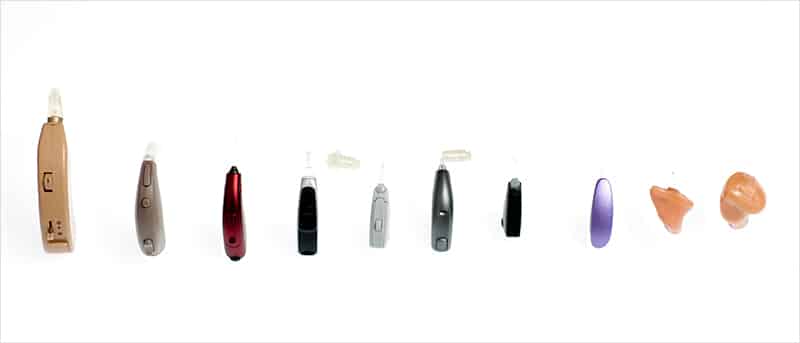What Is A Hearing Aid?

Hearing aids are battery-powered devices that help to amplify sounds to better improve hearing. They can help individuals with hearing loss listen, communicate, and be able to participate in regular activities more easily. They also help with being able to hear in both noisy and quiet environments. They are small enough to wear behind your ear, or in some cases, in your ear canal.
Hearing Aid Components
A standard hearing aid consists of four different parts:
- A microphone to pick up the sounds around you
- An amplifier to increase the volume of the sounds
- A receiver to send the amplified sounds into your ear
- A battery to power the device. Some batteries are also rechargeable
Hearing Aid Types
Prior to 2005, hearing aids came in several types, including conventional analog, programmable analog, and digital. Analog devices converted sound into electric signals and amplified them. Conventional analog devices had few features and required manual volume adjustment. Programmable analog devices could be programmed and adjusted based on the user’s preferences.
All hearing aids available today are digital. Digital devices work by converting sound into code, much like computer codes and amplifying it. This code has information about the pitch, volume, and direction of the sound, allowing you to identify and understand what’s happening around you more easily. Some can also adjust to your surroundings and change how they’re amplifying sounds to match your environment. They are also easily fine-tuned by a professional to ensure you’re getting the best experience from your device.
Hearing Aid Styles
There are several styles of hearing aid, but the most common are as follows:
- Behind-the-Ear (BTE) – Often the most powerful, this device rests behind your ear. It is suitable for a wide range of hearing loss, including severe loss.
- Receiver-In-Canal (RIC) – The body of the hearing aid is behind your ear, while a thin tube sits inside the ear canal. It doesn’t block the canal, allowing air and sound to flow naturally and reduces the feeling of having your ear plugged.
- In-the-Ear (ITE) – Custom-fitted devices that rest in the concha, or bowl of the ear.
- Completely-in-Canal (CIC) – Devices worn deep inside the ear canal. You would need to be evaluated and measured by a hearing specialist to determine if you are a good candidate for this device.
Who Do Hearing Aids Help?
Hearing aids aren’t suitable to help with all varieties of hearing loss and tend to work best for individuals that have damage to their inner ear or the nerve that connects your ear to the brain. This damage may be caused by age, exposure to loud noises, disease, and certain medications. Be sure to visit a hearing specialist when you experience hearing loss to determine how you can best manage your symptoms.
To learn more about hearing aids and find the device that’s right for you, speak to the hearing specialists at Bravo Hearing.

